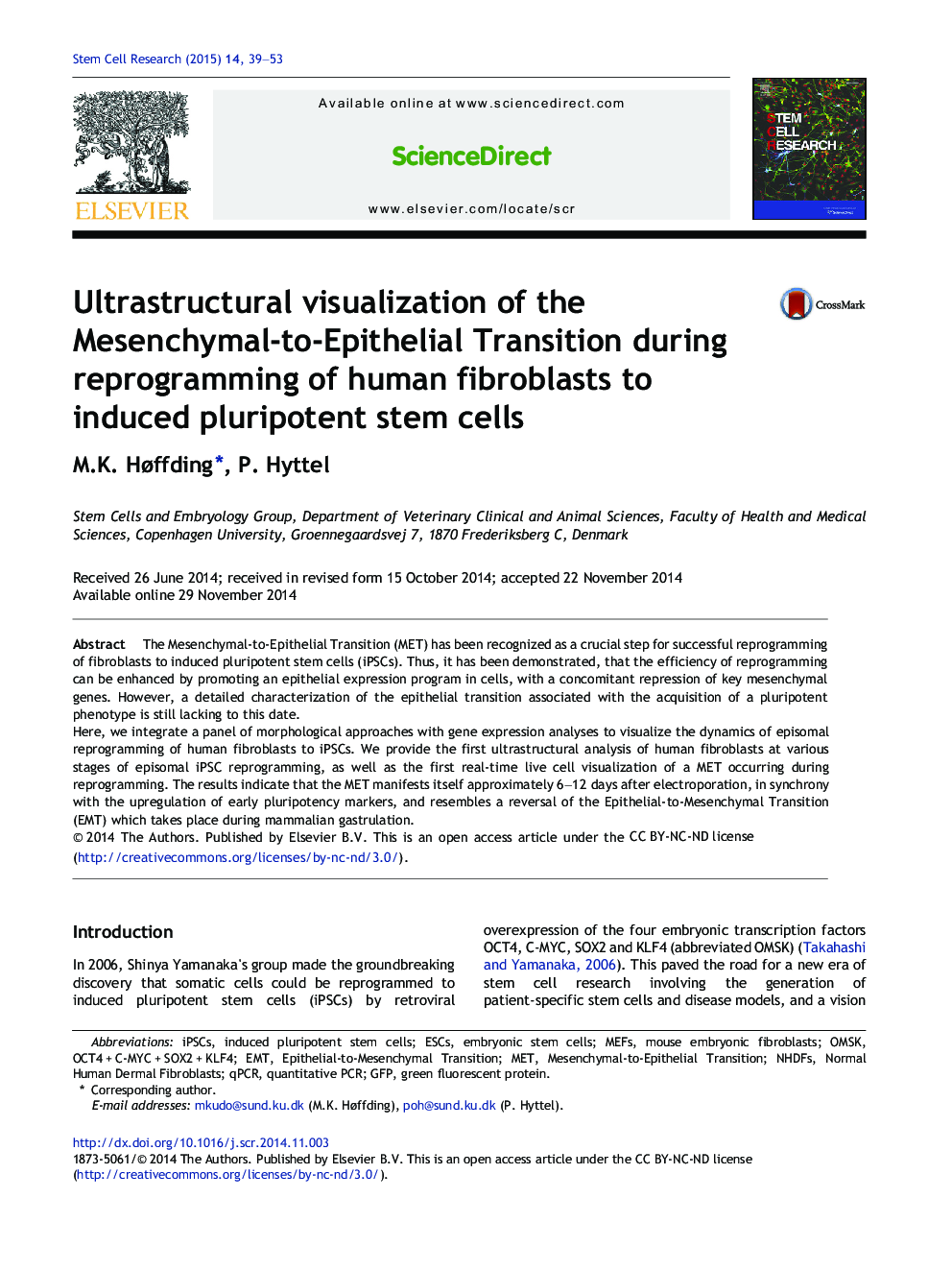| Article ID | Journal | Published Year | Pages | File Type |
|---|---|---|---|---|
| 2094228 | Stem Cell Research | 2015 | 15 Pages |
•Human fibroblasts were reprogrammed to hiPSCs using episomal plasmids.•Advanced microscopy was applied to characterize the dynamics of reprogramming.•The reprogramming comprised an Initiation phase and a Maturation phase.•The Initiation phase involved MET and onset of endogenous pluripotency.•The MET resembled a rewinding of the EMT which occurs at gastrulation.
The Mesenchymal-to-Epithelial Transition (MET) has been recognized as a crucial step for successful reprogramming of fibroblasts to induced pluripotent stem cells (iPSCs). Thus, it has been demonstrated, that the efficiency of reprogramming can be enhanced by promoting an epithelial expression program in cells, with a concomitant repression of key mesenchymal genes. However, a detailed characterization of the epithelial transition associated with the acquisition of a pluripotent phenotype is still lacking to this date.Here, we integrate a panel of morphological approaches with gene expression analyses to visualize the dynamics of episomal reprogramming of human fibroblasts to iPSCs. We provide the first ultrastructural analysis of human fibroblasts at various stages of episomal iPSC reprogramming, as well as the first real-time live cell visualization of a MET occurring during reprogramming. The results indicate that the MET manifests itself approximately 6–12 days after electroporation, in synchrony with the upregulation of early pluripotency markers, and resembles a reversal of the Epithelial-to-Mesenchymal Transition (EMT) which takes place during mammalian gastrulation.
